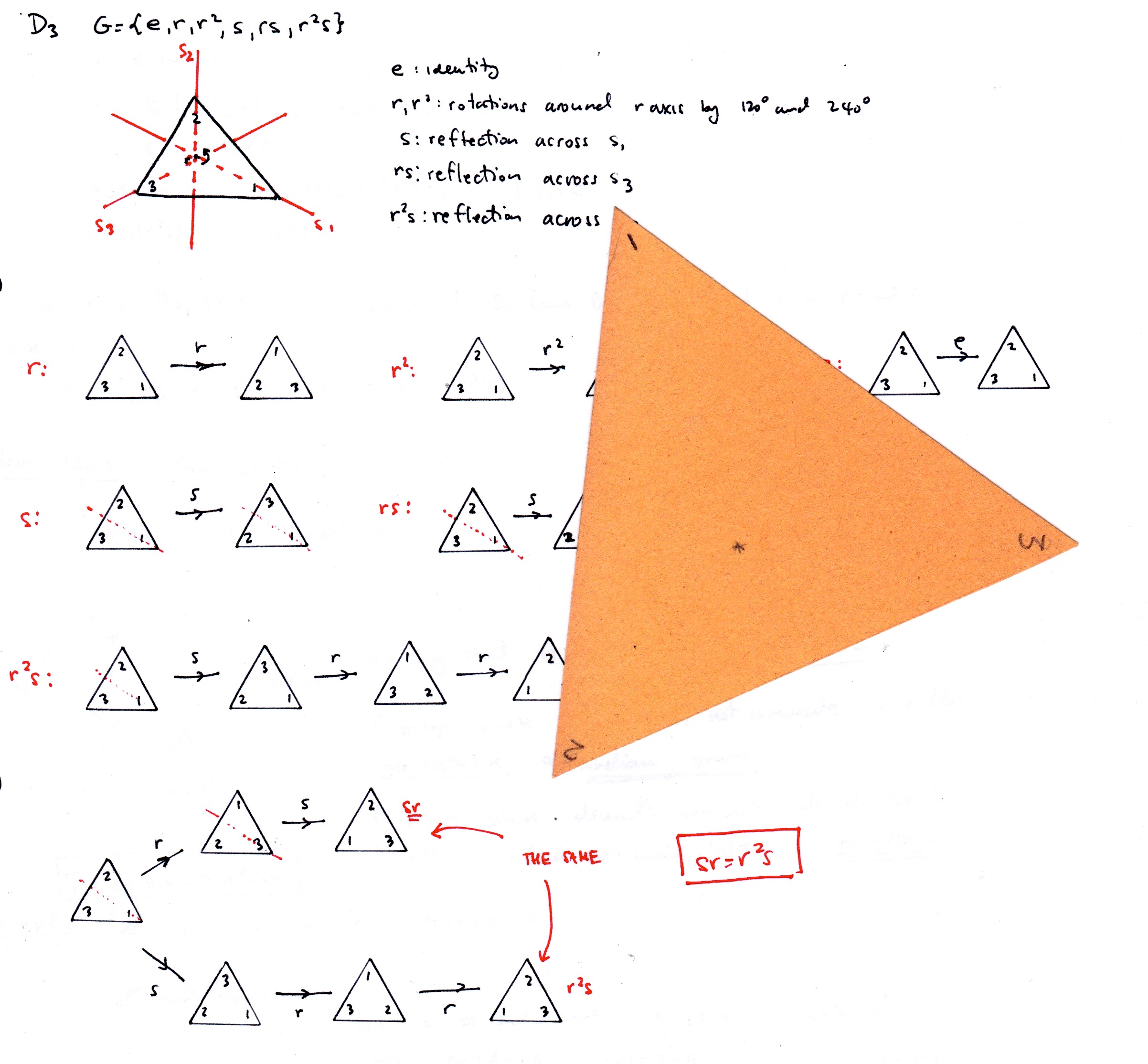-
Discovering Group Theory, Day 7
On Day 7, we moved on to the symmetries of a square. Using the same methods as for the equilateral triangle, we got the structure of D4, though we left some derivations for a homework assignment. We then made an educated guess about the structure of the symmetry group of a pentagon, D5, and then generalized to the symmetries of an n-dimensional regular polygon, which led us to the formal definition of Dn.
-
Discovering Group Theory, Day 6
On Day 6, we dove into dihedral group D3, which students have been exploring independently as part of their homework and in the context of the symmetries of an equilateral triangle.
- We tackled the group using three methods:
- physically manipulating a cutout of an equilateral triangle,
- drawing diagrams of various operations, simple (single rotation or reflection) and combined (rotation followed by a reflection, etc.), and
- working out the results of combined operations algebraically.This was an attempt to unify the physical experience of manipulating an object, visually representing the effects of those manipulations on the object, and expressing such operations symbolically.

Symmetry transformations of an equilateral triangle.
- We also revisited the already familiar concepts of identity, inverse, generators, group order, and element order, and constructed the Cayley table for D3.
- We noticed that the order in which rotations and reflections are carried out does matter, which motivated the introduction of the commutativity as a property of two elements. This led us to the definitions of Abelian and a non-Abelian groups.
- We tackled the group using three methods: